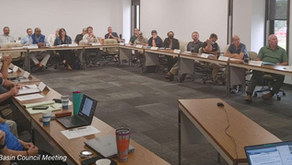Recognizing When Team Efforts Fail (and knowing when it’s time to quit)
- JD Solomon
- Jun 4, 2024
- 3 min read
Updated: Jun 6, 2024

Teamwork is essential to success in many areas of life, whether in school, sports, professional societies, or business. However, not all team efforts lead to successful outcomes. Knowing when to re-group—or, more importantly, when to quit—is an important role for any facilitator. These are some key indicators that a team effort is failing.
Lack of Communication
Poor communication is one of the most significant signs that a team effort is failing. Effective teamwork relies heavily on clear and open communication among all members. When team members do not share information, misunderstand instructions, or fail to give updates on their progress, the team is likely to struggle. Communication issues can lead to confusion about tasks, missed deadlines, and a lack of coordination. If team meetings are rare or unproductive, this is a red flag.
Absence of Clear Goals
Another indicator of a failing team effort is the lack of clear, shared goals. Successful teams have a common understanding of their objectives and what they need to achieve. When goals are not well-defined or communicated, team members may work towards different outcomes or priorities, resulting in disorganized and ineffective efforts. Without clear goals, measuring progress or determining if the team is on the right track is challenging.
Low Morale and Motivation
Disengaged or unmotivated team members can significantly hinder a team's success. If you notice that team members are frequently absent, show little enthusiasm for the project, or put minimal effort into their tasks, these are signs of low morale. A lack of motivation can stem from various issues, such as feeling undervalued, not understanding the importance of their role, or conflicts within the team. When morale is low, productivity and creativity suffer.
Conflict and Tension
While some conflict in teams is natural and can even be productive, excessive or unresolved conflict is a sign of trouble. When team members frequently argue, fail to listen to each other, or undermine each other's efforts, it creates a toxic environment. Such tension can derail the team's progress and make collaborating difficult. It's important to address conflicts promptly and find ways to resolve them constructively.
Unequal Work Distribution
A failing team effort often has issues with task distribution. If certain team members are consistently overloaded while others contribute little, it can create resentment and burnout. Unequal work distribution indicates the team is not functioning as a cohesive unit. Everyone should clearly understand their responsibilities and feel that their workload is fair and manageable.
Lack of Progress
Finally, a clear sign that a team effort is failing is a lack of progress towards the goal. If deadlines are consistently missed, deliverables are not completed, or the quality of work is subpar, it's a strong indication that something is wrong. Regularly reviewing the team's progress and making necessary adjustments is crucial to keeping the project on track.
What to Do About It
Hopefully, you developed a team charter when the work began. If so, revisit before it's too late. If not, hope that there is still time to formally charter the team
with desired outcomes, roles, deadlines, deliverables, and success indicators.
When team performance starts to erode, scaling back the scope is usually helpful. That's tough for many facilitators, who see this as an act of failure. However, scaling back assures some measure of success.
Pulling the plug is the last major option. It may enable some success to be taken from the group effort to date. What's more, it assures that the effort does not totally disintegrate into harsh feelings and wasted time. (I'll talk about how to pull the plug on team efforts in a subsequent facilitation article.)
When Team Efforts Fail
Recognizing the signs of a failing team effort is the first step toward addressing and correcting the issues. By paying attention to communication, setting clear goals, maintaining high morale, managing conflicts, ensuring fair work distribution, and tracking progress, teams can improve their chances of success. Effective teamwork requires constant effort and adjustment, but by being aware of these warning signs, teams can take proactive steps to achieve their goals.
JD Solomon Inc. provides solutions for program development, asset management, and facilitation at the nexus of facilities, infrastructure, and the environment. Subscribe for monthly updates related to our firm.
JD Solomon is the founder of JD Solomon, Inc., the creator of the FINESSE fishbone diagram, and the co-creator of the Solomon-Oldach Asset Prioritization (SOAP) Method. He is the author of Communicating Reliability, Risk & Resiliency to Decision Makers: How to Get Your Boss’s Boss to Understand and Facilitating with FINESSE: A Guide to Successful Business Solutions.




Commentaires